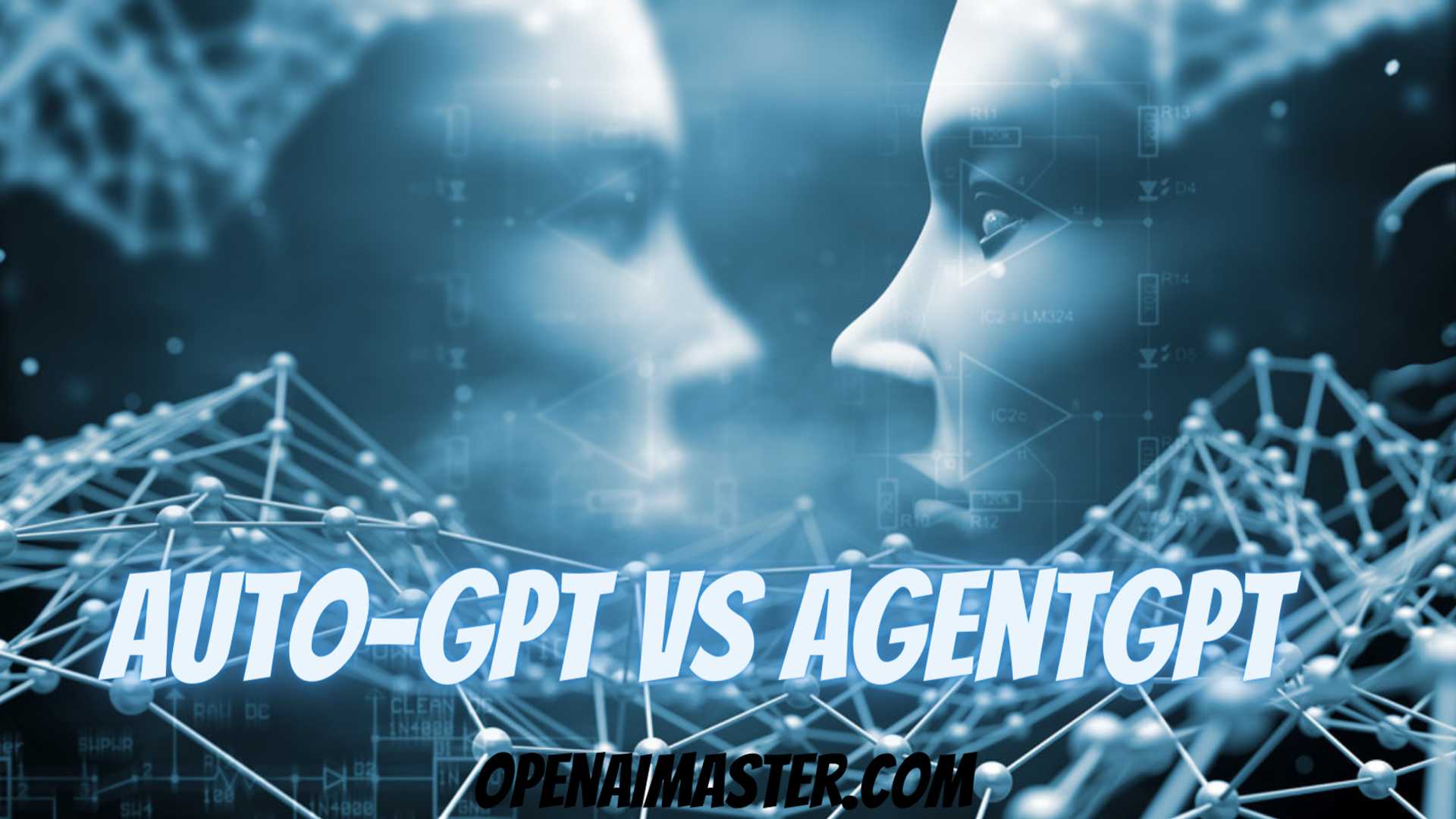Auto-GPT vs AgentGPT: Understanding the Differences – Open AI
Artificial intelligence agents have revolutionized the way we automate tasks and streamline workflows. Two such agents that are built on OpenAI’s API are Auto-GPT and AgentGPT. Although these AI agents share some similarities, they differ in their functionality and use cases. In this article, we explore the differences between Auto-GPT and AgentGPT and their potential applications.
Auto-GPT
Auto-GPT is an experimental open-source interface to GPT-4 and GPT-3.5 that enables self-guided (autonomous) task completion. It can take a list of tasks and automatically create prompts to finish the job. Auto-GPT replaces “human agents” with “AI agents” giving it some semblance of decision-making powers. It can function autonomously without the need for human agents.
Auto-GPT functions by handling follow-ups to an initial prompt of OpenAI’s models, both asking and answering them until a task is complete. It uses GPT-3.5 and GPT-4 paired with a companion bot that instructs GPT-3.5 and GPT-4 what to do. A user tells Auto-GPT what their goal is, and the bot, in turn, uses GPT-3.5 and GPT-4 and several programs to carry out every step needed to achieve whatever goal they’ve set. Auto-GPT can interact with apps, software, and services both online and local, like web browsers and word processors. Auto-GPT is capable of autonomously handling a task from A to Z without any human intervention.
AgentGPT
AgentGPT is a more user-friendly application that is built on the same technology as ChatGPT and Auto-GPT. It is designed to work with human agents to complete tasks although it can function autonomously to some extent. AgentGPT can give users unparalleled freedom and flexibility, enabling them to design AI agents that align with their unique goals. AI agents like AgentGPT can provide agents with the most accurate information possible, making it a secure, omniscient generative AI system for customer data.
One of the main differences between Auto-GPT and AgentGPT is their functionality. Auto-GPT is designed to function autonomously without the need for human intervention, while AgentGPT requires human input to operate. Furthermore, Auto-GPT has a higher perplexity score than AgentGPT, which means that it is better equipped to generate more complex and diverse language. However, this may also make Auto-GPT less efficient in certain use cases, such as simple data entry or social media management.
Potential Use Cases
Auto-GPT is ideal for data entry and management, social media management, customer service and support, content creation and curation, and research and analysis. AgentGPT is well-suited for personalized marketing and sales, customer service and support, data analysis and insights, process automation, and content creation and curation. Although both these AI agents have their own advantages and disadvantages, they are both useful tools for automating tasks and streamlining workflows.
In conclusion, both Auto-GPT and AgentGPT are useful tools for automating tasks and streamlining workflows, but they differ in their functionality and potential use cases. Auto-GPT is designed to function autonomously without human input, whereas AgentGPT requires human agents to operate. Understanding these differences can help determine which AI agent is best suited for a specific task or workflow.




















